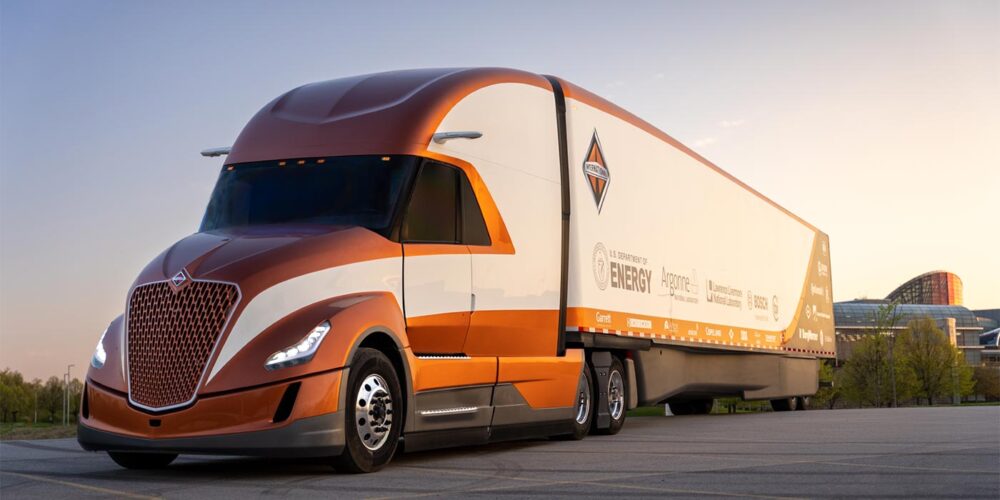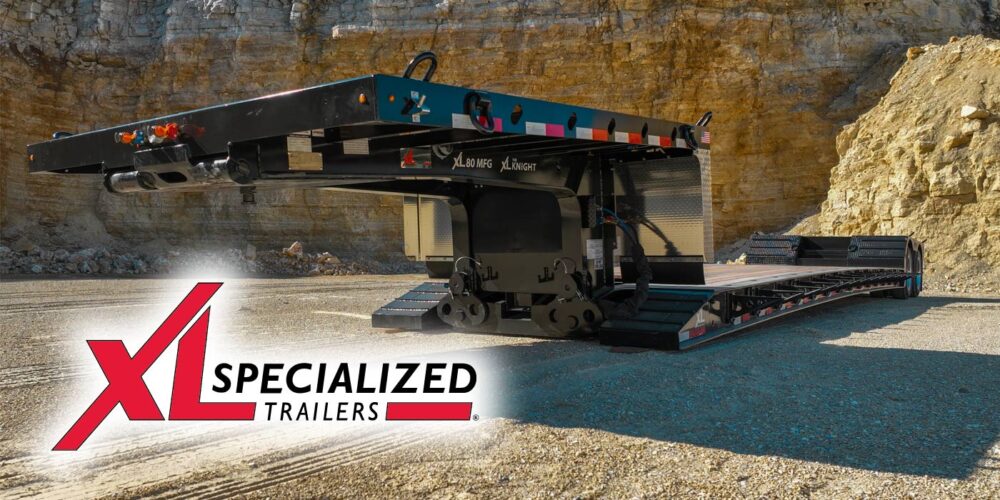Navistar recently revealed the results of the International SuperTruck II, a project in partnership with the U.S. Department of Energy (DOE). According to the company’s recent press release, International SuperTruck II demonstrates 16 miles per gallon (MPG) fuel efficiency through hybridization and a 170% improvement in freight efficiency, among other advancements over the 2009 baseline vehicle, its International SuperTruck I. It also proves technical approaches to weight reduction from rolling resistance technologies, aerodynamic improvements, and powertrain technologies designed to deliver premium freight efficiency to assist in reducing U.S. dependency on fossil fuels in the commercial vehicle sector.
International SuperTruck II focused on the next generation of vehicle efficiency improvements through hybridization and aerodynamics, resulting in 55% engine brake thermal efficiency, assessed TCO opportunities for individual technologies, and high-voltage electrification efforts modeling hybrid technologies that can be utilized for fully electric vehicles, Navistar notes.
“The team concentrated its design on high-voltage electrification, utilizing hybrid technology on a path toward full electrification that has the potential to be commercialized in fully electric vehicles and improve customers’ total cost of ownership (TCO) and business operations,” said Russ Zukouski, chief engineer, Global Innovation and Principal Investigator for the Supertruck programs.
International SuperTruck II was built as a hybrid vehicle featuring a combustion engine with high-voltage accessories and technologies, developed in partnership with Bosch. The company notes that engine improvements were made in key areas including combustion, friction, gas exchange, and airflow through the engine. A redesigned cylinder head with dual overhead cam engine and enhanced fuel system resulted in a 2% fuel economy improvement when compared to International SuperTruck I, as stated in the recent press release. Aftertreatment system improvements, according to Navistar, included diesel exhausted fluid (DEF) dosing, improved mixing and lower restrictions, new selective catalytic reduction (SCR) formulations for high-NOx reduction and reduced cold-start activation time.
Navistar also built its own trailer to boost efficiency. “It includes a 100% composite box designed for minimum aerodynamic drag with light weight, integrated cross members, controlled underbody flow with composite aero treatments, next-generation solar panels with connectivity options, and ride height control,” said Dean Oppermann, chief engineer, advanced truck, Navistar.
“A full system approach was required to achieve 55.2% brake thermal efficiency,” added Jim Cigler, chief engineer, Advanced Engine. “Opportunities were identified by internal engineering teams along with research partner Argonne National Laboratory through detailed analysis and simulation. System suppliers such as Bosch, Jacobs Vehicle Systems, and Applied Nano Systems (ANS) brought new approaches to key systems that enabled laboratory success and yielded real-world fuel economy improvements.
International SuperTruck II highlighted connectivity with next-generation predictive cruise control, as well as leveraging technologies and information within the larger TRATON Group to explore vehicle-to-everything technologies to enhance safety and vehicle efficiencies, the OEM noted.














